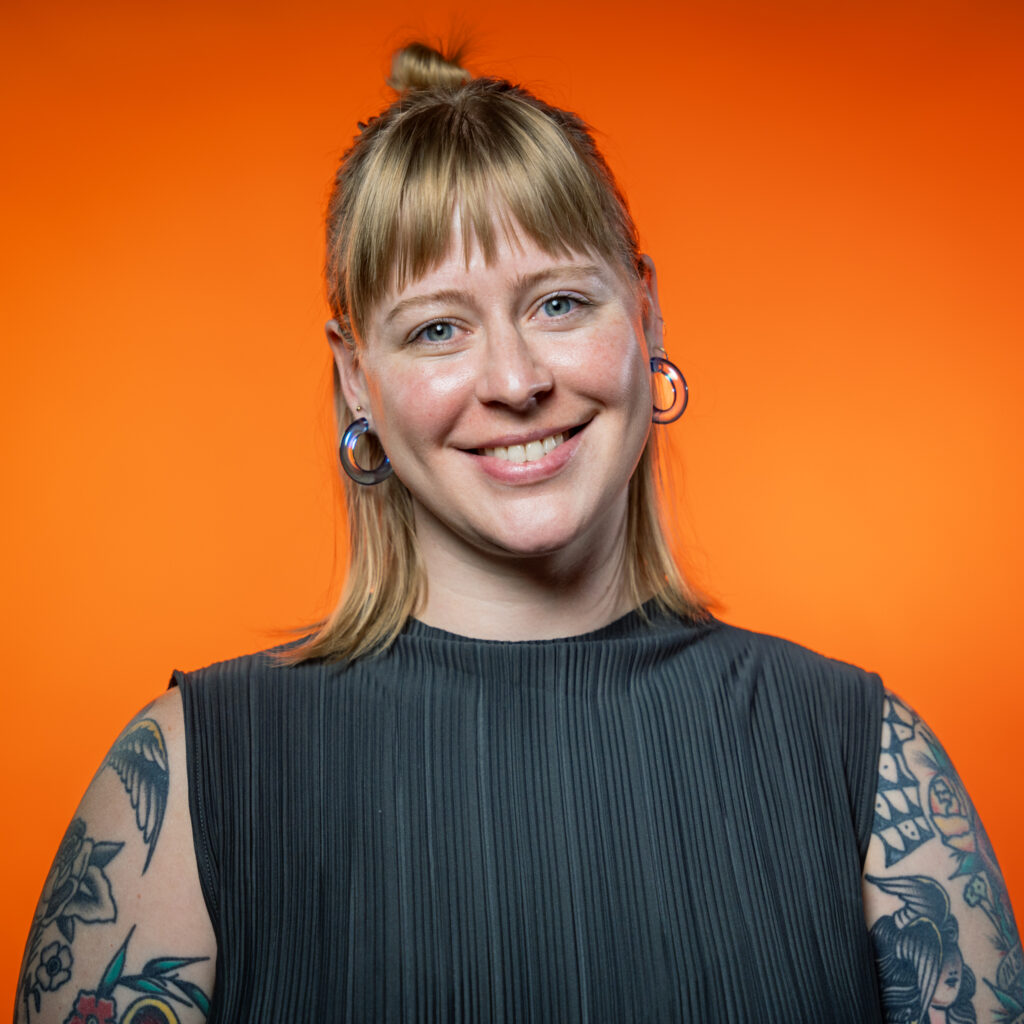Last September, AAC’s Director of the Office of Engagement and Adjunct Professor Linnea Fitterer presented two sessions at the National Council of Arts Administrators Conference (NCAAC). The annual gathering took place over four days at Interlochen Center for the Arts in Traverse City, Mich.
This year’s unifying theme was “ASSEMBLE: Embracing our Collective Network.” Workshops, presentations, meet-ups, and events all responded to that concept within the framework of arts administration. NCAA describes the theme as follows: “More than just a gathering, ASSEMBLE embodies the philosophy of assemblage, where people, things, and stories intertwine to spark innovation and drive change. As arts administrators, we are vital in creating these spaces.”
Says Linnea, “The 2024 conference theme allowed me to share the unique value of community and continuing education departments at institutions of higher education. Synergies between the topics discussed at the NCAA conference, our mission, and the environment of the Interlochen Center for the Arts campus in Northern Michigan, was a triangle of unity—broadening my understanding of the impacts and challenges of our work and the importance of engagement through assembling.”
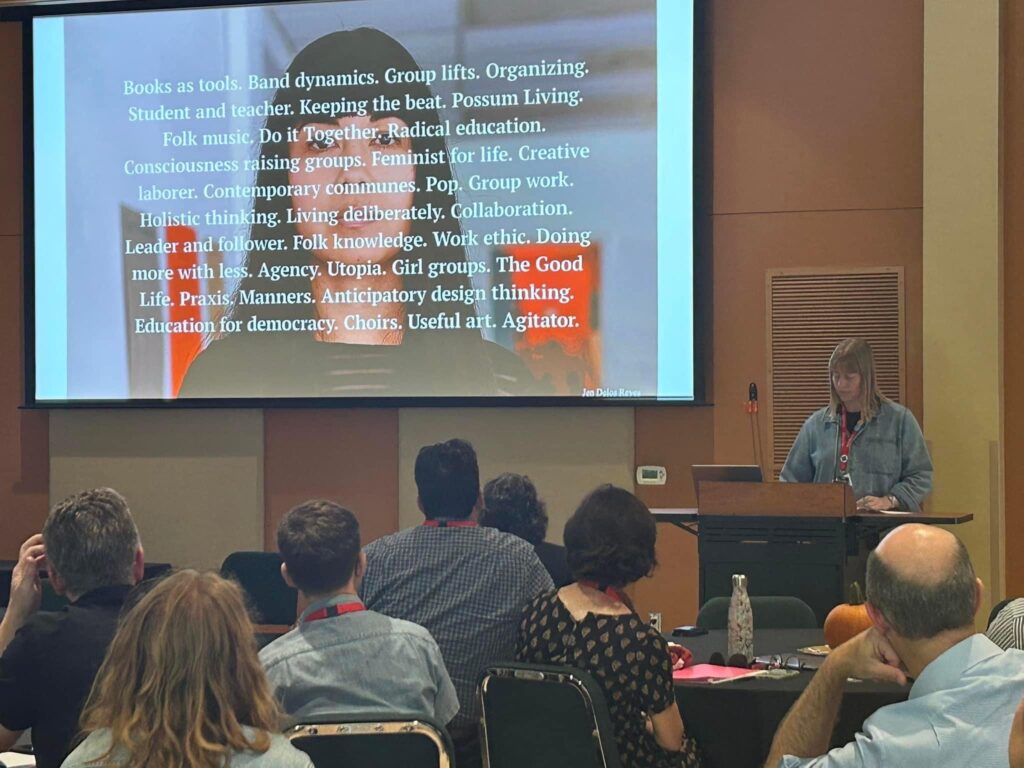
Assembl(ag)e is the Answer
At AAC, Linnea teaches and explores social practice art and its application in our B.F.A. and M.A.A.E. programs. She also directs the Office of Engagement, which provides art educational programming for learners of all ages and artistic community engagement opportunities in the Greater Cincinnati region. At NCAAC, Linnea delivered a presentation called “Assembl(ag)e is the Answer.”
The presentation connected concepts of social practice art and the practice of assemblage through the lens of art historical movements. She defined social practice art as the opposite of a studio practice, one that relies on observation, conversation and participation; assemblage is the collection or gathering of people. By embracing the practices of both, Linnea presented, our fine art and fine art education institutions experience positive impact. Here’s an excerpt:
“Part of what we do in higher education that is never directly represented in our curriculum or listed in a syllabus is the responsibility of teaching our students how to be people—especially our traditional undergraduates. I don’t believe it is enough to solely instruct technique—because even in the process of doing just that, interventions of humanity arise.
Students look to us—as staff and faculty who have more expertise as working artists, writers, scholars, and humans—to show them how to behave in times of challenge. Even in their rejection of us, they observe, collect, and arrange our responses to their benefit. Not that we must be perfect, without mistake, or consequence, but we must own ourselves/our positions as part of the composition—and equally view our students in that manner.”
Linnea Fitterer
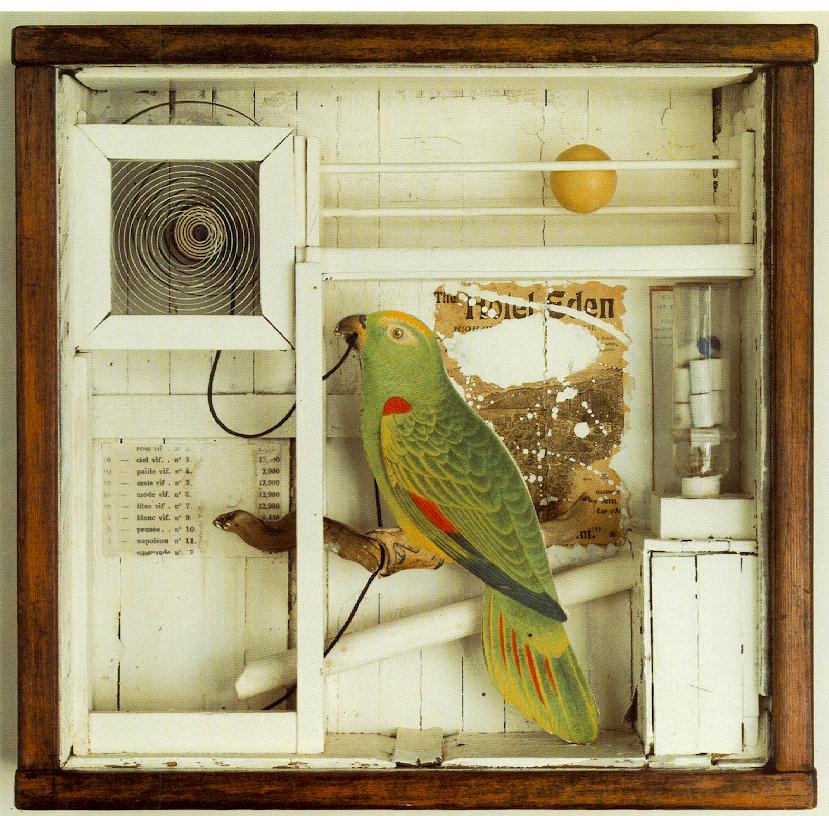
Ground Rules for Arts Administrators
Linnea also led a workshop called “Ground Rules for Arts Administrators.” A complete description of the workshop reads, “We will create instruction-based lists for successful leadership in the arts. We will assemble, discuss, and break down the outdated expectations, unspoken perceptions, and other myths of being a leader and begin to rebuild a unique, personal, and fulfilling list for an administrative methodology in line with your core values.”
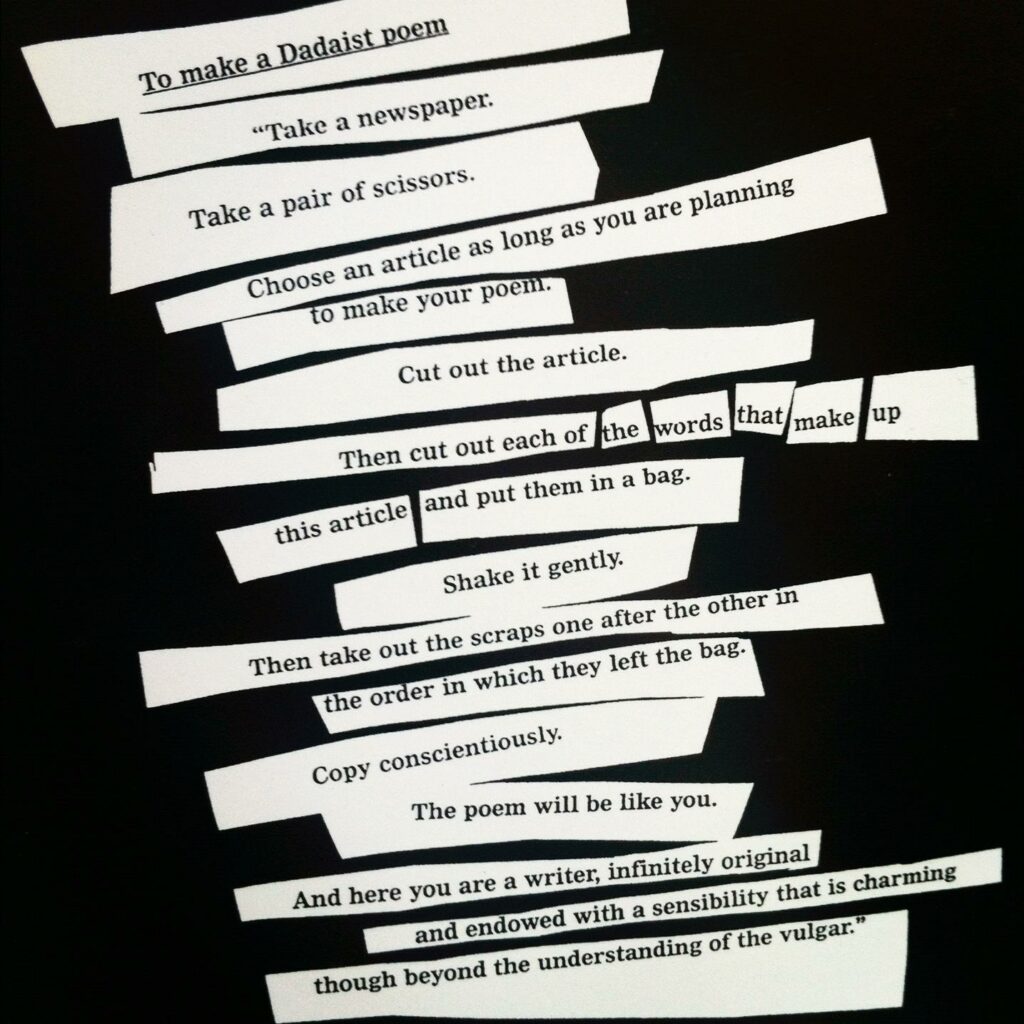
Connecting administrative practices with the art form of Dadaism, Linnea guided participants through the process of creating statements of leadership principles. This process started with the creation of individual Dada poems, like the image above. Then, Linnea provided examples of different rules and standards that artists and arts administrators had enacted for themselves or their own institutions. Altogether, the process enabled participants to consider what ideas emerge from thinking critically about a collection of assembled ideas.
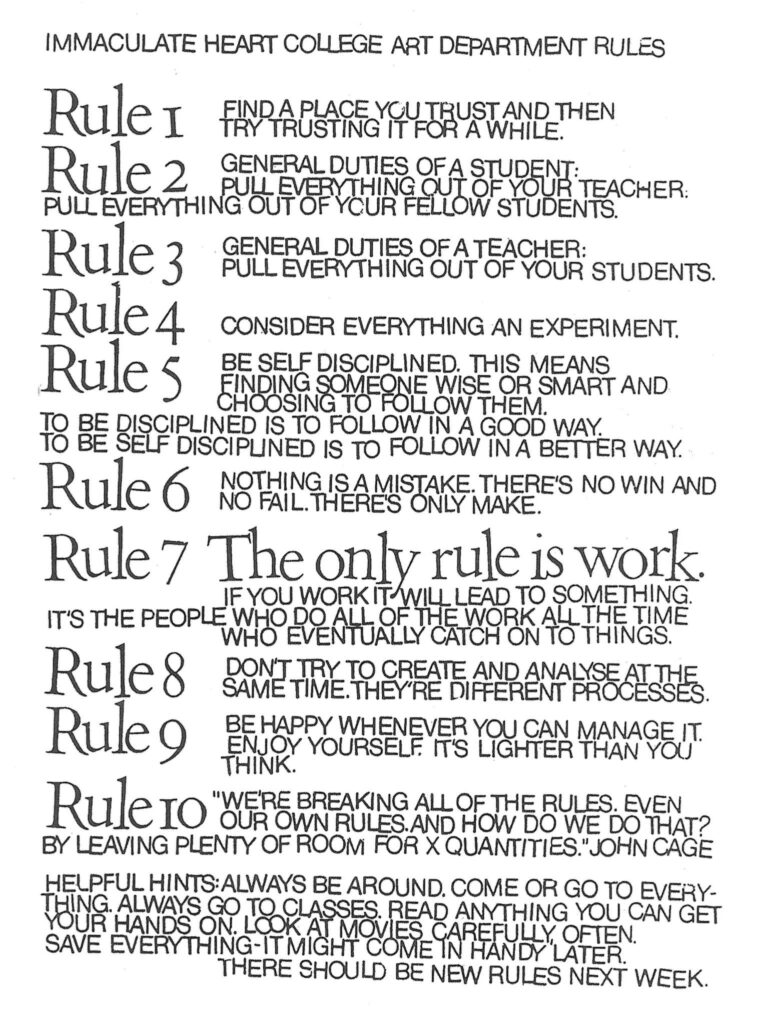
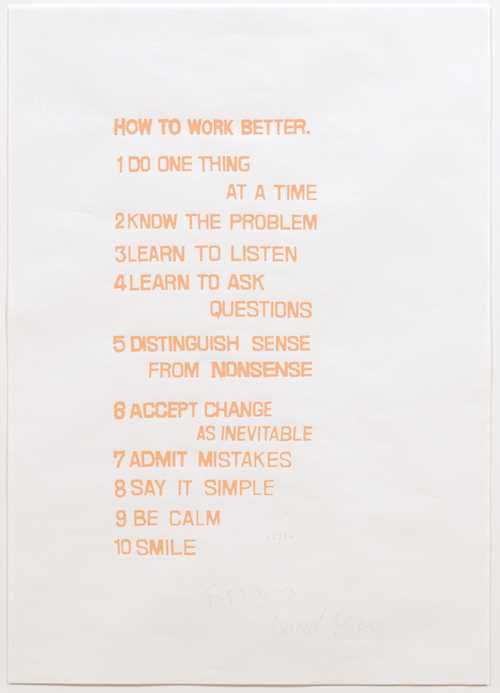
The Office of Engagement at AAC is defined by three pillars: community education, outreach and enrichment, and social impact. Linnea describes her experience with the NCAA conference as an organic alignment with the office’s mission to create and sustain environments of community learning: “By organizing programs and courses that open our institution’s doors to populations beyond those who are traditionally supported by a college of art and design, we assemble diverse and creative minds who use art for expression and advancement.”
You can read more about the Office of Engagement’s philosophy and practices here, or go directly to the programs that define each of the office’s three pillars:
- Community Education: Art classes that serve the community—registration for Spring courses is now open!
- Outreach and Enrichment: Arts programming for K-12 students
- Social Impact: Community art projects to inspire change
Engage with the Office of Engagement on Facebook and Instagram.
